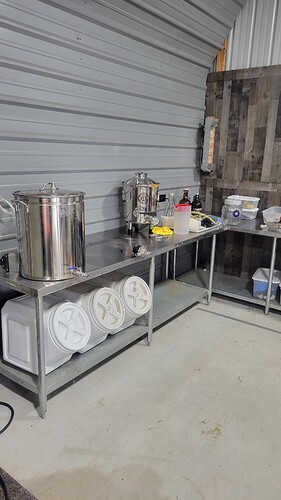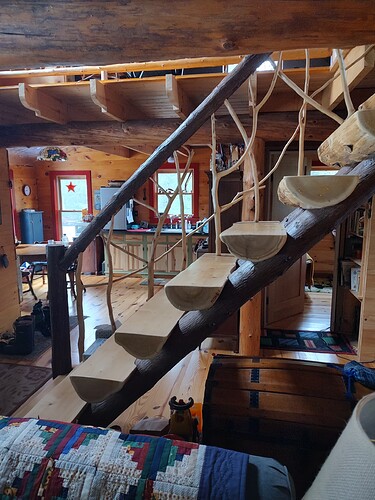I wouldn’t just give up on any of the stuff… perhaps enuff for 3 ten gallon batches… ? Just to dabble and see what you get. You will then know IF any of its worth while….
Sneezles61
Yeh I need to design some recipes and get some yeast
Your hops should be good as long as they were stored frozen and in an O2 environment. I might take some AA% off however, say 1/2 to 1% ( so say they’re 12% AA I would rate them at 11-11.5%).
The grains- are the containers truly airtight? I agree with the others in testing/tasting. To do this I would make a ‘malt tea.’ Basically you use a small amount of grain/water.
- Weigh a sample of 50 grams (1.75 oz) of base malt. If evaluating specialty malts, instead use 25 g (0.88 oz) of specialty malt blended with another 25 g (0.88 oz) of base (pale) malt. For dark roasted malts, use 7.5 g (0.25 oz) of roast malt with 42.5 g (1.5 oz) of base (pale) malt. Obviously you can double or triple the amount of malt and water if you need a larger sample for a group to evaluate.
- Mill the grains in a clean electric grinder for about 10 seconds. A coffee grinder works well for this as you want a coarse flour consistency – which is finer than you would typically use for brewing.
- Next heat 450 ml (1.9 cups or 0.95 pints) of water to 65 C (149 F) and combine it in with the crushed grain sample in an insulated thermos or growler and shake it for 20 seconds to mix the grain and water. Let the mixture stand for 15 minutes.
- While the mixture is steeping, place some filter paper (Alstrom 515) at the top of a clean beaker or glass. A coffee filter is a suitable substitute if you don’t have access to lab paper filters. Wet the paper with some deionized water.
- Swirl the thermos/growler to bring the particles back into solution and pour the mixture into the filter. Draw the first 100 ml (just under 1/2 cup) off the collected wort and pour it back into the thermos to collect any remaining grainsm then pour that also into the filter. Allow the filter to drain completely leaving your liquid sample.
- Let the sample cool, and do your sensory evaluation when it has reached room temperature, within four hours of filtering.
Thanks @loopie_beer . Im just going to give it a whirl and see what happens seeing as how I already spent the money on the ingredients. Going to do a smash beer with marris otter and talus hops. The hops havent been opened at all and I chewed on some of the grain this afternoon, seems fine to me. I did toss all the hops that were loosely packaged in the freezer from years ago. I have aome whole leaf tetnanger that are still sealed as well and will probably just make a lager with them.
I used crushed grain that was a few year old and got the expected gravity. Did not notice flavor loss. Being old though, my tasted buds not as good and not sure I would have noticed…would not use for beer competition. I did add amylase to counteract for loss in natural enzymes with time. Your hops will be fine given they were frozen and sealed IMHO.
When I moved my brewing to my new basement, I put in a large inline fan up in ceiling to exhaust the steam coming off the electric brew kettle. I open the screen in the storm door to let the fresh air in. Glad I put fan in because once I forgot I had turned fan off and basement had a layer of fog in it in no time! I use a flexible insulated hose that is used by HVAC people to convey hot air to registers in house. It acts as a snorkel to suck out the steam. Put it right in the middle of the kettle when brewing. I cut it to be long enough to have a slight dip in it at the edge of the kettle. This allows it to accumulate condensate as that steam will condense in the exhaust line. Even insulated hose cools enough for some condensate to form. When you move the hose off the kettle the condensate will make a mess on floor so I have a home depot bucket to collect the condensate. It will still drip a little in the kettle so I move hose out of way at flameout. I also used some left over copper ground wire to hook through the hose so I can secure it kettle as well as easily hang the hose out of way when not in use.
I still have not got around to putting in a sink in basement. I clean my stuff mostly by just cleaning it all in the brew kettle. Clean the kettle first then circulate hot water with pbw and use that to clean other stuff. Have to walk upstairs to clean plastic fermenter ![]()
Worked out pretty well. Only missed my OG by a few points and I actually forgot to add a half pound of base malt. Also used marris otter instead of vienna in a recipe since thats all I had. Should be interesting.
Looks like a nice spacious area. Plenty of room to grow! ![]()
I have so wanted to go to electric. 100%. Don’t remember the exact one I was looking at but that seems to be the best way to proceed because of the ease of use.
That and get a small fridge with a temperature control for year round brewing and just better control.
I wouldn’t want to go back to a gas rig… I would like to sell my big set up and make a smaller one… but any offers I’ve had would hardly buy the pump…
Sneezles61
I do my mash indoors and chilling. I actually bought what I needed to build an electric boil kettle. Still sitting in the box with other stuff I bought and never used ![]() . The problem was I really don’t want to deal with the extra humidity. I work hard to keep it out of my house
. The problem was I really don’t want to deal with the extra humidity. I work hard to keep it out of my house
Winter I need humidity… my old Gibson guitars don’t care for a dry home…
Sneezles61
The sound board in my wife’s grand piano doesn’t like fluctuations. I get a lecture about it from the tuner. Not sure about guitars.
I dont think there is a great return on selling used brewing equipment. Good for those buying used though. I got the biab system from high gravity brew. It has a nice electric control
Piano sound boards and, well, any stringed instrument with a wood sound board suffer when it’s too dry…
Sneezles61
Go electric if you can. It was by far the best thing I did. Brewed outdoor for about 15 years. Even when the weather was nice moving stuff out from the basement was a PIA. And, when it was freezing I would have to move the garden hose inside so it would be thawed… don’t miss that at all! Again- go electric if you can!
I think I was told 45% humidity for sound boards. I now some people keep guitars in humidors. A bit more difficult with the piano. I keep the A/C vent closed in the piano room and don’t generally crank the A/C or the heat. Try to keep the house around 40%. This is more of a struggle in summer being close to the sea. That said I’ve been at my camp 800sqft for 4 days with the woodstove going and it’s still at 40%. My point being It is hard enough keeping in the zone without adding more. My cabin has a lot of wood that sucks up moisture but it only takes up so much after that your feeding mold. Yeah I know Im an anal carpenter
That place looks beautiful… your camp?
I try to keep 40% humidity… having baseboard hydronic heat I think helps…
Sneezles61
That place does look amazing

